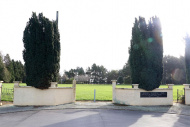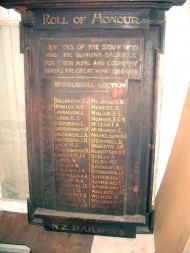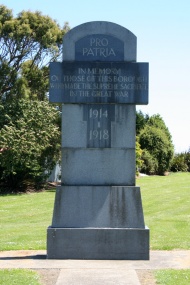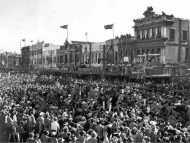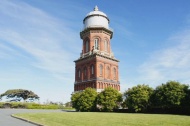Events In History
-
 20 February 1914Scotland crosses Southland in pioneering flight
20 February 1914Scotland crosses Southland in pioneering flightJ.W.H. Scotland flew a Caudron biplane from Invercargill to Gore, the first cross-country flight in New Zealand. Read more...
-
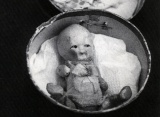 12 August 1895Winton baby-farmer Minnie Dean hanged
12 August 1895Winton baby-farmer Minnie Dean hangedIn 1895 Southland’s Williamina (Minnie) Dean became the first – and only – woman to be hanged in New Zealand. Her story exposed the stark realities of paid childcare and the lack of choice for many women in this period. Read more...
-
 5 February 1867Opening of railway from Invercargill to Bluff
5 February 1867Opening of railway from Invercargill to BluffThe 27-km line between Invercargill and Bluff was the third public railway in New Zealand. Southland's railway ambitions helped drive the province into bankruptcy. Read more...

Often seen out in his blue bonnet and tartan plaid in early colonial Dunedin, Captain William Cargill was the first leader of the Free Church of Scotland’s settlement in Dunedin.
Read more...Articles
Regional rugby

The passion and parochialism of provincial rugby helped give the game a special place in New Zealand’s social and sporting history. Read brief histories, highlights and quirky facts about each of New Zealand's 26 regional rugby teams.
- Page 29 - Southland rugbyHistory and highlights of rugby in the Southland
Invercargill is New Zealand’s southernmost city. Mostly flat, Invercargill stretches over an open plain beside the Waihopai River estuary. John Turnbull Thomson, chief surveyor for the Otago province, selected the site for the new town, and laid out the streets in 1856. After Southland briefly separated from Otago province in 1861, Invercargill became the centre of the new province. The gold rush in Otago’s Wakatipu district, closer to Invercargill than to Dunedin, boosted the town in 1863 but was not repeated. Immigration, promoted by the government during the 1870s, saw the population increase. Invercargill was marked by its Presbyterianism. Its churches were substantial constructions. Presbyterians were a strong force in voting the town ‘dry’ in 1905; it stayed that way until 1943. Between the world wars (1918–39), Invercargill rivalled Whanganui for the rank of largest town after the four main centres. It acquired city status in 1930.

